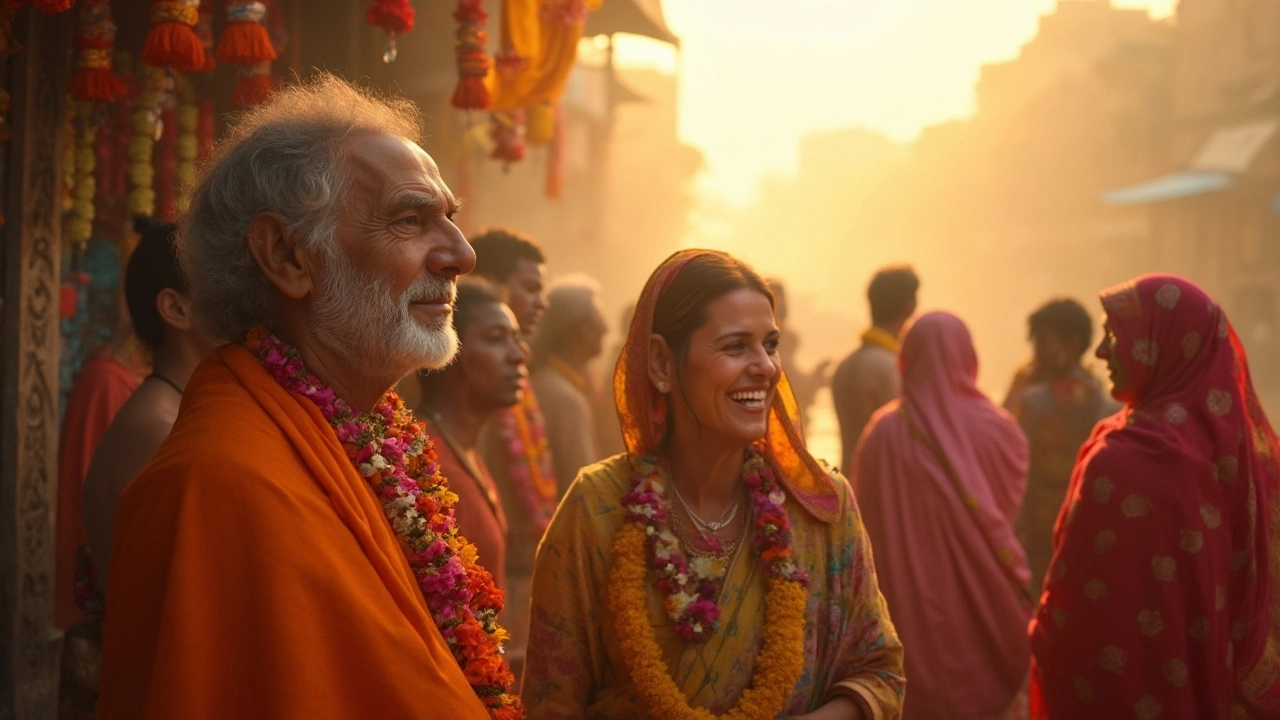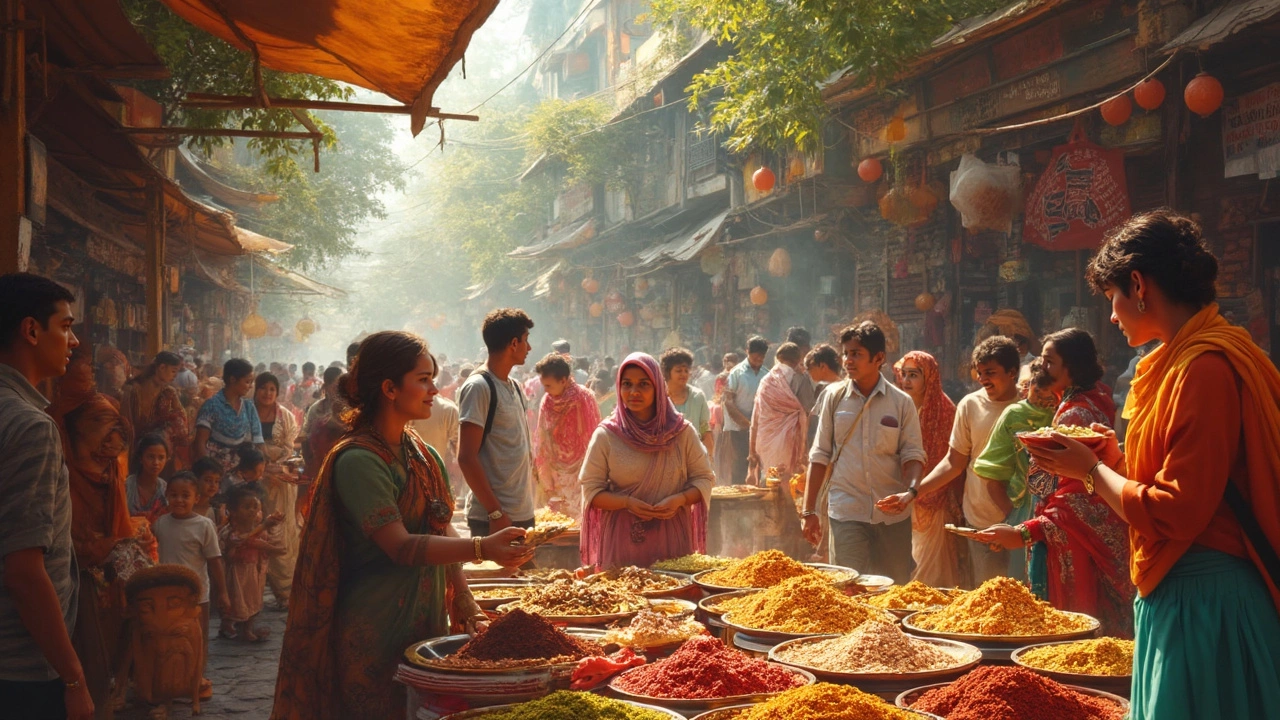SEARCH
Why Foreigners Love to Visit India: Culture, Food, History & Surprises


Ever met a traveler who couldn’t stop talking about India? There’s a reason the country grabs people and doesn’t let go. It’s not about bucket lists or ticking off Taj Mahal selfies. It’s something deeper—almost magnetic. Whether you’re a backpacker from Berlin or a digital nomad from Argentina, India does more than just draw you in. It shakes up your senses and messes with your old ideas. Some call it culture shock, others call it magic. Either way, foreigners fall headfirst, and rarely come out unchanged.
The Irresistible Pull of Indian Culture
India is not just a country, it’s a living, breathing experience. Step onto its streets and you’ll notice two things instantly: organized chaos and infectious energy. Imagine weaving through honking rickshaws, spice-laden air, and bursts of color so wild you think Instagram would explode if you took a photo. The local festivals don’t just happen once in a while—they pop up like street food stalls, each more festive than the last. Think Holi with its wild color fights, or Diwali’s explosions of light. Experts say that nearly two million international tourists time their visits to experience just these festivals each year.
Now, let’s talk about spirituality—India’s not shy about it. People come here to find something inside themselves. You’ll find them meditating by the Ganges in Rishikesh, joining yoga retreats in Kerala, or chanting with monks in Ladakh. If you believe stats, over 30% of foreign tourists try some form of spiritual or wellness activity while in India. Even if you have zero plans to be the next yoga influencer, that gentle pressure to slow down, breathe, and reflect sneaks up on you.
What floors visitors the most, though, is how open people are. You ask for directions, you’ll likely end up with tea. You sit on a train, you’ll share samosas and stories with strangers. Some call it hospitality, but it feels more like a family reunion with the whole country. You’re not just a face in the crowd—someone wants to know where you’re from, teach you about cricket, or get your review on street chai.
And let’s not skip Bollywood. Even if you don’t watch the movies back home, you’ll get swept up in song-and-dance pop culture. Someone might grab your arm and pull you into a wedding dance, or insist you try a classic “filmi” pose in front of a palace. Culture here is contagious—you end up living it, not just watching it.
India’s Festival of Flavors: Food That Hooks You
The universal ice-breaker in India? Food. It’s everywhere, in every shape and spice. Foreigners love India’s food scene because it’s not just about eating—it’s a sport, an adventure, and sometimes, a gamble with your stomach. Seriously, in a single city like Mumbai, you can munch on vada pav (spicy potato burgers), pav bhaji (buttery veggie mash), or a thousand types of street snacks. You walk a few meters, and it’s like entering a new edible universe.
Ever tried a dosa the size of your arm or a thali with more bowls than you have fingers? Visitors go wild for these. If you’re into sweets, good luck trying to ignore a window full of jalebis or gulab jamuns. Brits, Aussies, Koreans—travelers from everywhere—report falling for Indian sweets despite swearing off sugar back home.
The biggest surprise? Indian food is wildly different from north to south. In Punjab, it’s all about creamy curries and buttery breads. Travel to Kerala, and it’s coconut everything with a punch of heat. Data from the Indian Ministry of Tourism shows that more than half of foreign tourists list culinary adventure as their top reason for choosing India. Plus, street food is cheap. Even high-end restaurants in cities like Delhi or Bangalore are more affordable than in most Western capitals, letting folks splurge without feeling guilty.
For folks with allergies or diets (vegans, gluten-free), India is a paradise. Cities like Auroville or Goa are loaded with plant-based cafes. You find gluten-free rotis, vegan lassis, and even millet pizzas. And if you’re bold enough, locals will steer you to offbeat treasures—think tribal sausages in Nagaland or fiery fish curries in Bengal. Tips? Always ask for food to be “less spicy” unless you want your taste buds nuked. Drink bottled water. Follow the local crowds—they know the stalls where fresh food flies off the counter.
Here’s a bonus: if you enroll in a cooking class, you not only learn the how-to but get street cred for making biryani or masala chai at home. Many travelers say these classes are the highlight of their trip, since you go from clueless newbie to spice-specialist in a matter of hours.

History, Diversity, and a Daily Dose of the Unexpected
India’s stories are so old, they make some European countries seem like toddlers. From palaces that whisper royal secrets to temples older than some religions, every city comes with its own legends. Take Varanasi, for instance—the world’s longest-inhabited city. Or step into the caves of Ajanta and Ellora, packed with art, and realize these were built before Rome fell.
The math might surprise you: India boasts 42 UNESCO World Heritage Sites as of 2024. That means if you traveled just to see each one, you’d need at least a month—and you’d still be missing the epic forts, dreamlike stepwells, or the Himalayan monasteries. Backpackers root for Rajasthan with its endless sandcastles, while history buffs can’t stop raving about Hampi’s lost kingdom.
Diversity doesn’t just mean people. It’s language, fashion, dancing styles, even the daily routines that switch every time you cross a state line. India speaks 22 official languages, but walk five blocks and you’ll spot a new dialect. There are over 1,600 spoken tongues in total. Even signs at train stations will flip between English, Hindi, and a jumble of scripts you’ve never seen. Foreigners often fall in love with this beautiful mess, because there’s always something new to learn or stumble upon.
What knocks foreign guests sideways, though, is the surprise factor. Your plan might be to visit Taj Mahal, but you end up crashing a village festival five hours away, drinking frothy buttermilk and being paraded around like a guest of honor. Or your bus breaks down, and instead of disaster, you get invited into a family’s home for dinner. Stories like these keep people coming back. You really don’t know what’ll happen next—and that’s half the fun.
Here’s a quick look at some stats that spell out India’s variety:
| Category | India |
|---|---|
| World Heritage Sites | 42 (as of 2024) |
| Recognized Languages | 22 official, over 1,600 spoken |
| Religions Practiced | 6 main, plus hundreds of indigenous |
| Annual Foreign Visitors | 10.9 million (2023) |
| Average Cost per Day (Backpacker) | $25-$40 USD |
The crazy part? You don’t have to spend like royalty to see it all. Many travelers say the best experiences don’t cost a cent—just a bit of curiosity and openness.
Tips for Visiting and What to Expect Next
If you’re thinking about heading to India, a few tips go a long way. First, pace yourself. India isn’t a checklist country; racing to see everything means you miss the magic. Pick a region, spend time in a smaller city or village, and let your plans be flexible enough to absorb the daily surprises.
Talking about logistics, foreigners need a tourist visa. Now, most can apply for an e-visa online which covers major airports and is processed in about 72 hours. Keep digital copies of your documents handy. And always have a back-up plan for transport—delays and sudden changes are more common here than in most places. Apps like Ola and Uber work in metro cities, but in smaller areas, you’ll rely on auto-rickshaws or friendly locals.
Money is king, but cashless payments are booming in Indian cities. Still, keep small denominations handy, especially for chai stalls or train rides. When haggling at markets, smile, keep it friendly, and accept that you’ll sometimes overpay—but you’ll have a story to tell. Safety tip: India is mostly safe for tourists, but use the same instincts you would anywhere. Avoid walking alone late at night in unfamiliar places, especially as a solo female traveler.
Connectivity is easy: SIM cards are dirt cheap, and 4G speeds are everywhere. But sometimes, a strong Wi-Fi signal and a working fan feel like luxury. If you get sick (Delhi belly is real!), basic meds are sold at every corner pharmacy, and many foreigners say local doctors are quick and affordable.
Want to get off the beaten path? Check out Meghalaya’s living root bridges, Orissa’s tribal markets, or the tea hills of Munnar. Don’t just stick to the Golden Triangle. The northeast and south hardly see foreign crowds—and locals will be eager to show you what their home is all about.
In the end, it comes down to this: India will push you, surprise you, and—if you let it—change the way you think about beauty, chaos, and even about yourself. That’s why so many come for a week, but end up staying for months. India isn’t just a trip, it’s an experience that doesn’t quit.